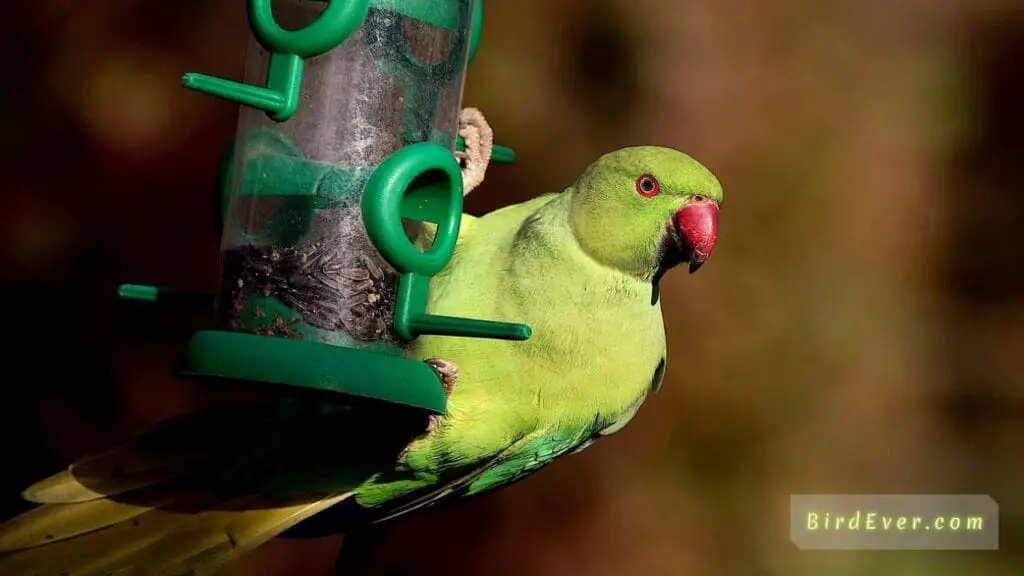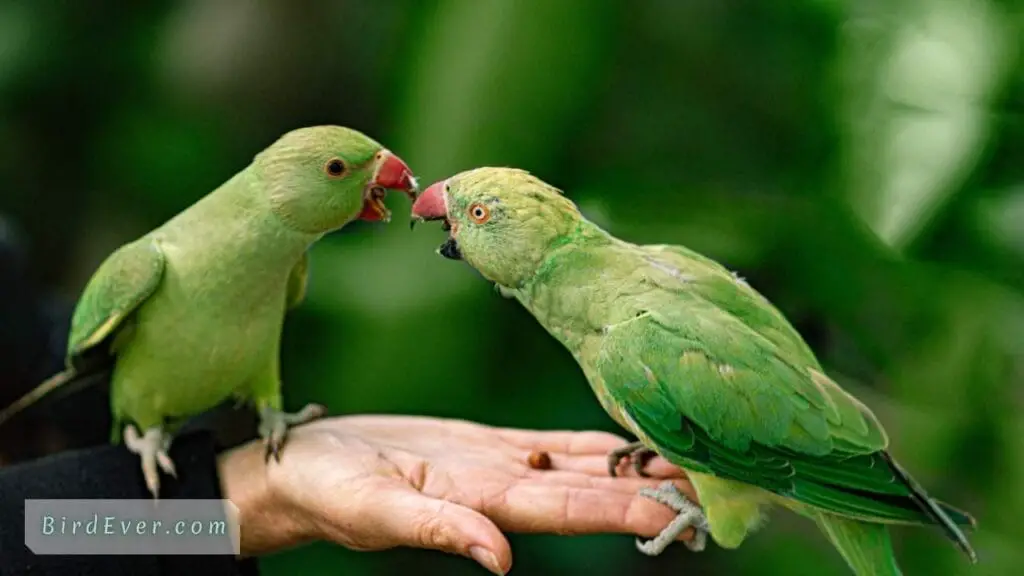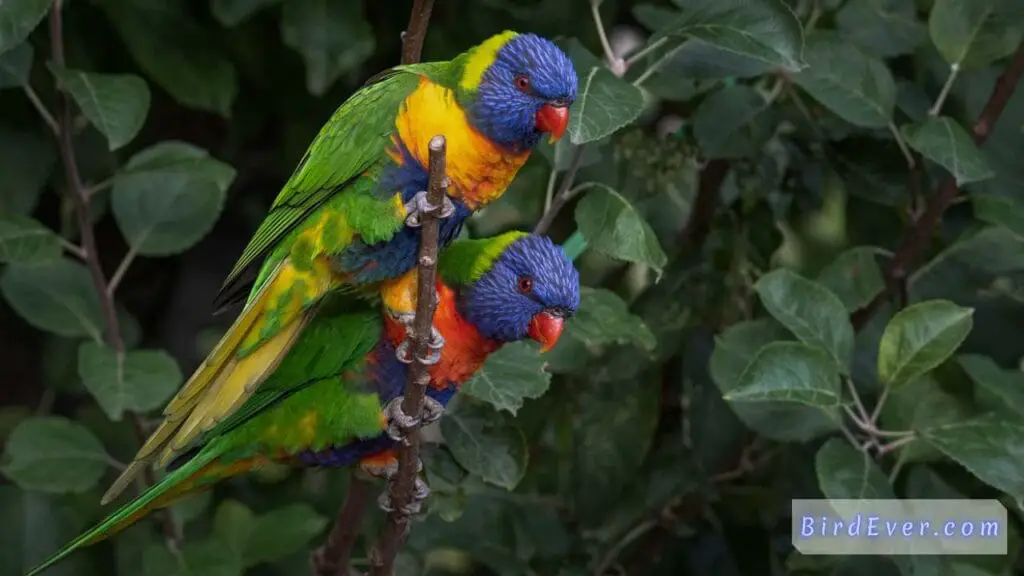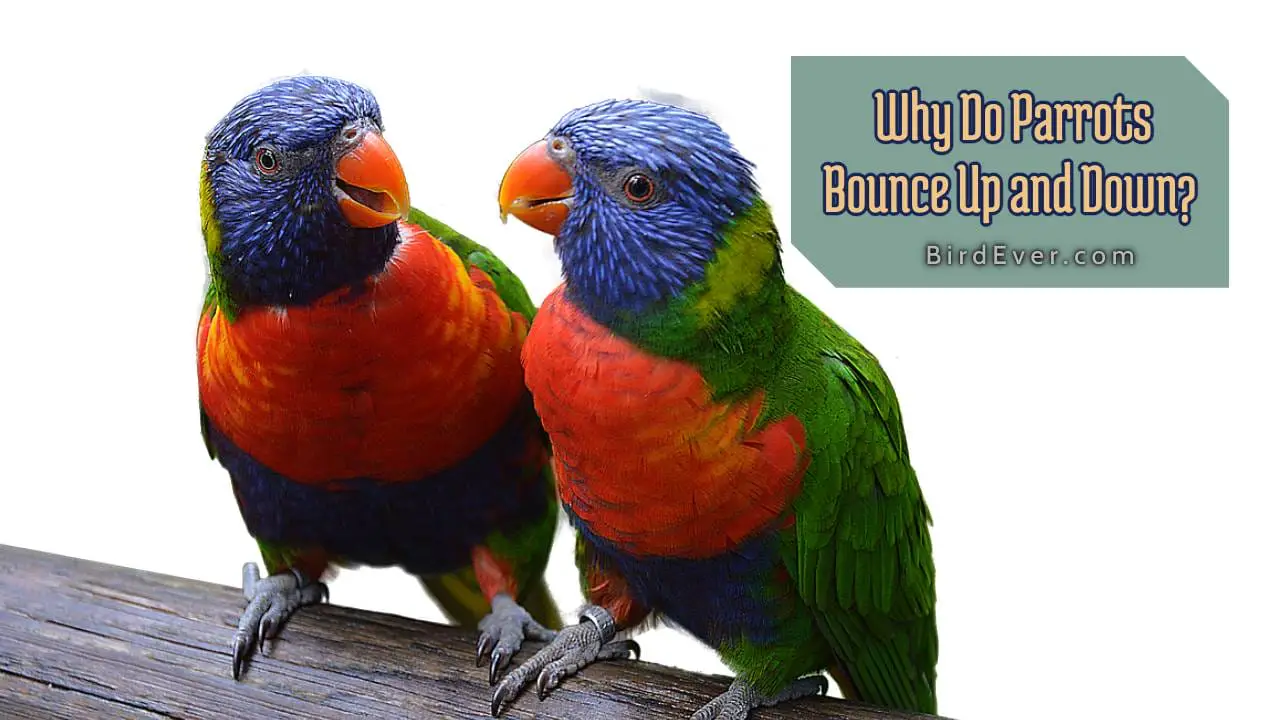Why Do Parrots Bounce Up and Down? Unveiling the Mystery
Do you know parrots are fascinating creatures that can express themselves in ways we might not understand at first? One of their unique behaviors is head bobbing, which can be a cause of confusion for many pet owners. However, this may not be the only reason for your parrot’s head bobbing. Here we are to reveal the reasons why do parrots bounce up and down, including various species of parrots in the wild.
Head bobbing is often a part of their communication and can mean plenty of things depending on the context. In this blog, we will delve into the reasons behind parrot head bobbing and discuss whether it is normal or not.
We will also explore how wild parrots differ from domestic ones in this behavior and how different parrot species express themselves.
Lastly, we’ll provide some insights on what to do if your parrot is excessively bobbing its head, so you can ensure your feathered friend’s well-being. Join us as we discover the intricacies of parrot behavior!
Understanding Parrot Behavior

Parrots, being highly social creatures, exhibit a wide range of communicative behaviors. One such behavior is head bobbing, which is completely natural for parrots.
By closely observing and understanding their body language and vocalizations, we can decode their behavior and gain insights into their needs and emotions.
According to Stephanie Edlund, a Certified Parrot Behavior Consultant and IAABC Parrot Division Chair, parrots may also exhibit this behavior when they’re excited.
Additionally, seeking guidance from a certified parrot behavior consultant can provide valuable insights into understanding parrot behavior.
This understanding is essential for bird owners to create a nurturing and enriching environment for their feathered companions.
Is it Normal for Parrots to Bob their Heads?
Yes, head bobbing is a typical behavior in parrots. It is seen in many species, especially younger parrots and chicks. Adult parrots also head bob as a way to communicate or express themselves.
However, if the head bobbing is excessive or accompanied by other abnormal behaviors, it may indicate a health issue.
Decoding the Reasons Behind Parrots Bouncing Up and Down

If you have ever witnessed your parrot bouncing up and down, you may be wondering what in the world they are doing. Is it a dance? A display of excitement? Or is there something more going on?
In this part, we are going to decode the reasons behind this quirky behavior. Head bobbing in parrots can have various explanations. From communication to exercise, there may be more to this behavior than meets the eye.
So grab a perch and get ready to dive into the world of parrot bouncing!
Head Bobbing as a Part of Parrot Communication
Head bobbing is a common behavior observed in parrots. Parrots use it as a form of body language to communicate with both humans and other parrots.
Parrots may bob their heads to convey their intentions or emotions and to get attention or express their needs. This behavior can also be a sign of excitement or anticipation.
Bird owners often witness their parrots engaging in head-bobbing as a way of communication. Understanding the meaning behind these movements can help bird owners better understand their feathered companions.
To Express Hunger
Parrots may engage in head bobbing as a means of expressing their hunger. This behavior serves as a signal to their owners or caregivers that they need to be fed.
It is crucial for bird owners to be mindful of their parrot’s feeding schedule and provide meals accordingly. A balanced diet and regular feeding are essential for the overall health and well-being of these birds.
If a parrot’s head bobbing occurs frequently during meal times, it may indicate the need for a change in diet or feeding routine.
As a Signal for Attention
Parrots often bobble to capture the attention of their owners or caregivers. By rhythmically moving their heads up and down, parrots communicate their desire for interaction and engagement.
It’s important for bird owners to respond to this behavior with positive reinforcement, as it helps strengthen the bond between them and their feathered companions.
Understanding and fulfilling a parrot’s need for social interaction is vital for their mental stimulation and overall happiness.
To promote a healthy relationship, bird owners should spend quality time with their parrots and provide opportunities for socialization.
Reflecting Excitement or Anger
Head bobbing in parrots can be a sign of excitement or anticipation. When parrots are excited, they may engage in rapid head bobbing.
Conversely, head bobbing can also occur when a parrot is angry or frustrated. To accurately interpret a parrot’s emotions, it’s important to observe their body language and vocalizations.
Providing a stimulating environment and positive reinforcement can help alleviate negative emotions that may lead to head bobbing out of anger.
When Parrots Are Bored

When parrots are feeling bored or seeking stimulation, they may exhibit a behavior known as head bobbing. This repetitive action can be a sign of their restlessness.
To alleviate boredom and prevent excessive head bobbing, it is important for bird owners to provide a variety of toys, puzzles, and activities to keep their parrots mentally engaged.
Regular interaction, training, and environmental enrichment are key to ensuring that these intelligent creatures remain stimulated.
Moreover, seeking guidance from certified parrot behavior consultants, like Stephanie Edlund, can provide bird owners with additional strategies to address boredom-related head bobbing.
An Attempt to Bond with the Owner
Parrots often engage in head bobbing as a way to bond with their owners or caregivers. This behavior is seen as a form of communication and an expression of affection.
By responding to a parrot’s head bobbing with positive reinforcement and attention, the bond between the parrot and its owner can be strengthened.
Building trust and creating a nurturing environment are essential factors in fostering a strong bond with a pet parrot. Regular training and socialization further enhance the bond between a parrot and its owner.
Observations in the Wild: Do Wild Parrots Also Bob Their Heads?

Wild parrots also exhibit head bobbing, a behavior not exclusive to pet parrots. Studies show that wild parrots use head bobbing as a means of communication and social interaction.
Another possible reason for head-bobbing is that it helps parrots maintain balance while perching or moving around. By bobbing their heads, wild parrots can adjust their center of gravity and ensure stability.
In addition, head-bobbing may also be a sign of arousal or engagement, with parrots displaying this behavior when they are interested in something or preparing to engage in a specific activity.
Besides, wild parrots also bob their head to display territorial aggression. If some other bird enters their territory, the strong parrot will bob its head up and down, indicating that the surrounding area is its territory. The other bird may back off to avoid any confrontation with the aggressive parrot.
Overall, head-bobbing is a natural behavior for wild parrots and serves various functions depending on the context.
How Do Some Common Pet Parrot Species Express Themselves?
Parakeets, cockatoos, and macaws express themselves through various behaviors. Parakeets use head bobbing, vocalizations, and perch movements.
Cockatoos communicate and display their mood through head-bobbing. Macaws express themselves through head movements, body language, and vocalizations.
Each parrot species has its unique way of expressing emotions or needs. Understanding their natural behavior helps interpret their expressions and conditions.
Also read: What Does It Mean When A Sparrow Visits You?
FAQs
Why do parrots bounce up and down? Are you done exploring the reasons? If still not, now you can learn more on this topic from the following FAQs.
Why do parrots dance?
Parrots dance for various reasons, which can include expressing happiness, seeking attention, or simply enjoying the rhythm of music.
Dancing is a form of communication and social interaction for parrots, much like head bobbing. It allows them to engage with their owners and bond on a deeper level.
When parrots dance, they often bob their heads, move their bodies in sync with the music, and even mimic certain movements they observe from their owners.
This behavior showcases their intelligence and ability to mimic and adapt to their environment.
Is this behavior common in all types of parrots or just a few specific ones?
Head-bobbing and dancing are common behaviors observed in many parrot species. While it may be more noticeable in some species like cockatoos and macaws.
Other parrot species such as parakeets also engage in head-bobbing and dancing. These behaviors are natural and serve various functions depending on the context.
Is there any scientific explanation behind this behavior of parrots?
Yes, there is a scientific explanation behind the behavior of parrots bouncing up and down. These movements are believed to be a part of their natural behaviors and serve several purposes.
One possible explanation is that head-bobbing and dancing are ways for parrots to express their emotions and mood. By bobbing their heads or moving their bodies in sync with music, they can communicate their happiness, excitement, or desire for attention.
Another explanation is that these behaviors are a form of social interaction for parrots. Just like humans dance to connect with others, parrots use dancing as a means to strengthen bonds with their owners or fellow parrots.
Why does a parakeet perch on one foot?
A parakeet perches on one foot to conserve energy. When a parakeet is perched, its weight is evenly distributed across both feet.
This allows the parakeet to move more quickly and efficiently when it needs to escape danger or take flight.
What are some other interesting behaviors of parrots that are worth knowing?
Parrots are known for their fascinating behaviors, and here are a few more interesting ones worth knowing:
1. Mimicking: Parrots have the unique ability to mimic human speech and other sounds. This behavior is not just limited to a few specific parrot species but is observed in various types of parrots.
2. Feather Preening: Parrots are meticulous groomers and spend a significant amount of time preening their feathers. They use their beaks to comb through each feather, keeping them clean, healthy, and well-maintained.
3. Playfulness: Parrots are highly intelligent creatures and exhibit a great deal of playfulness. They enjoy engaging in activities that challenge their cognitive abilities, such as solving puzzles or playing with toys. This playfulness not only keeps them mentally stimulated but also helps to keep them physically active.
4. Nest Building: Parrots are skilled nest builders and have been observed constructing intricate nests using twigs, leaves, and other materials. These nests serve as comfortable homes for raising their young and provide protection from predators.
5. Vocalization: Parrots are well-known for their loud and expressive vocalizations. They use a variety of calls, squawks, and whistles to communicate with each other and their human companions. These vocalizations can convey a range of emotions, from excitement and happiness to fear or agitation.
What if my parrot is bobbing its head excessively?
If your parrot is bobbing its head excessively, it could be a sign of an underlying health issue. It’s important to have your parrot assessed by a veterinarian.
Providing mental stimulation and enrichment can help reduce this behavior, and consulting a certified parrot behavior consultant may be beneficial. Nutrition and gut health can also play a role in parrot behavior.
Endnote

In a nutshell, head bobbing is a natural behavior in parrots that serves as a form of communication. It can indicate hunger, a need for attention, excitement, boredom, or an attempt to bond with their owner.
While head bobbing is normal, excessive or repetitive head bobbing may indicate a health issue or stress. It’s important for parrot owners to monitor their birds’ behavior and consult with a veterinarian if they have concerns.
What’s more, it’s important to note that head-bobbing behavior may vary across different parrot species. Understanding and interpreting your parrot’s behavior can help strengthen the bond between you and your feathered friend.
